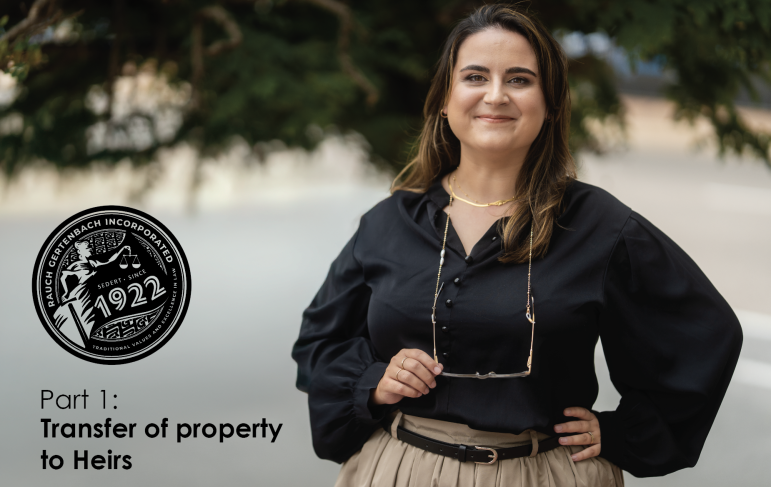When a person passes away, their estate, which includes all their assets and liabilities, must be distributed in accordance with their will and relevant legislation. Immovable property, such as a house, sectional title unit, farm or plot of land, may form part of the estate assets. This article will unpack the legal aspects involved in transferring such property from the deceased estate to the rightful heirs. Understanding the legislative principles can help executors and beneficiaries navigate the process with greater confidence and fewer delays.
The heir/s to whom immovable property must be transferred will be determined by the Will of the deceased or, if the deceased did not have a will, by the provisions of the Intestate Succession Act 81 of 1987. It’s important to note that heirs do not automatically acquire ownership of immovable property upon the death of the deceased. Ownership is only transferred upon the registration of the property in the Deeds Office, facilitated by the executor and a conveyancer.
The estate administration process is regulated by the Administration of Estates Act 66 of 1965 and starts with reporting the death and the estate to the Master of the High Court, who then appoints an executor to manage the estate’s administration. An executor will have been nominated by the Will of the deceased or by a nomination form signed by the intestate heirs in the absence of a Will.
Section 13 of the Administration of Estates Act provides that no person shall liquidate or distribute any assets in the estate of any deceased person except under letters of executorship granted by the Master. The nominated executor therefore has no authority to alienate or distribute any assets in a deceased estate before they have been appointed by the Master by virtue of Letters of Authority or Letters of Executorship.
The executor, once appointed, is responsible for:
- Identifying and gathering all assets of the deceased, including immovable property.
- Settling any debts and liabilities of the estate.
- Preparing and submitting a Liquidation and Distribution (L&D) Account to the Master for approval.
- Distributing the remaining assets to the rightful heirs in accordance with the will or the provisions of the Intestate Succession Act.
The liquidation and distribution account is sent to the Master’s office for approval and must lay open for inspection at the Master’s office, after the Master has examined it. The executor shall place a notice that the account will be so open for inspection by advertisement in the Government Gazette and in a newspaper circulating the district in which the deceased was ordinarily resident at the time of his death.
Section 42(1) of the Administration of Estates Act provides that the Conveyancer will need to lodge a certificate with the Registrar of Deeds, confirming that the transfer is in accordance with the liquidation and distribution account, which account has laid for inspection and that no objections thereto has been received. A transfer therefore cannot take place before the prescribed inspection period for the L&D has passed.
The Conveyancer’s fees for attending to the transfer, costs for obtaining any required clearance certificates, and any additional applications that needs to be brought, shall be bourn by the estate. If there is a cash shortfall in the estate, the heirs may elect to settle the shortfall or to sell the property. There is no transfer duty payable where immoveable property is transferred from the estate to heirs as these transactions are exempt from transfer duty.
Although any person can be nominated as the executor of a deceased estate, only a Conveyancer can attend to the registration of immovable property in the Deeds office. Rauch Gertenbach attends to the transfers of property in deceased estates where the firm is the nominated executor as well as in estates where the transfers are referred to us by independent executors.
Contact us at aleida@rgprok.com or 044 601 9900 for any queries relating to deceased estate transfers or the administration of deceased estates. www.rgprok.com
Article by: Aleida Kraamwinkel
Attorney & Conveyancer / Prokureur & Aktebesorger
LLB (UNISA)






